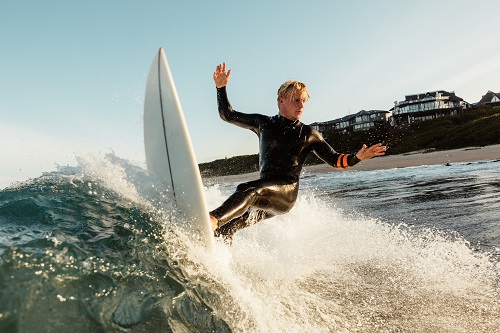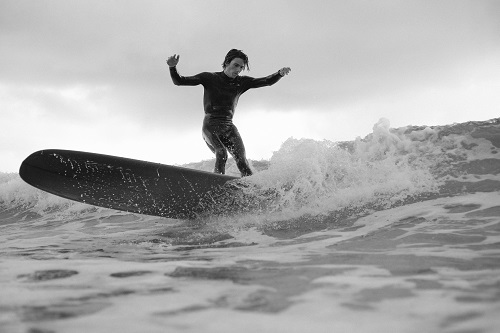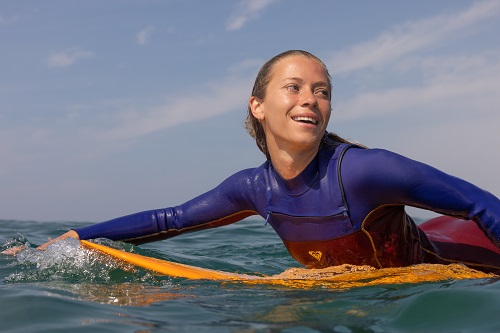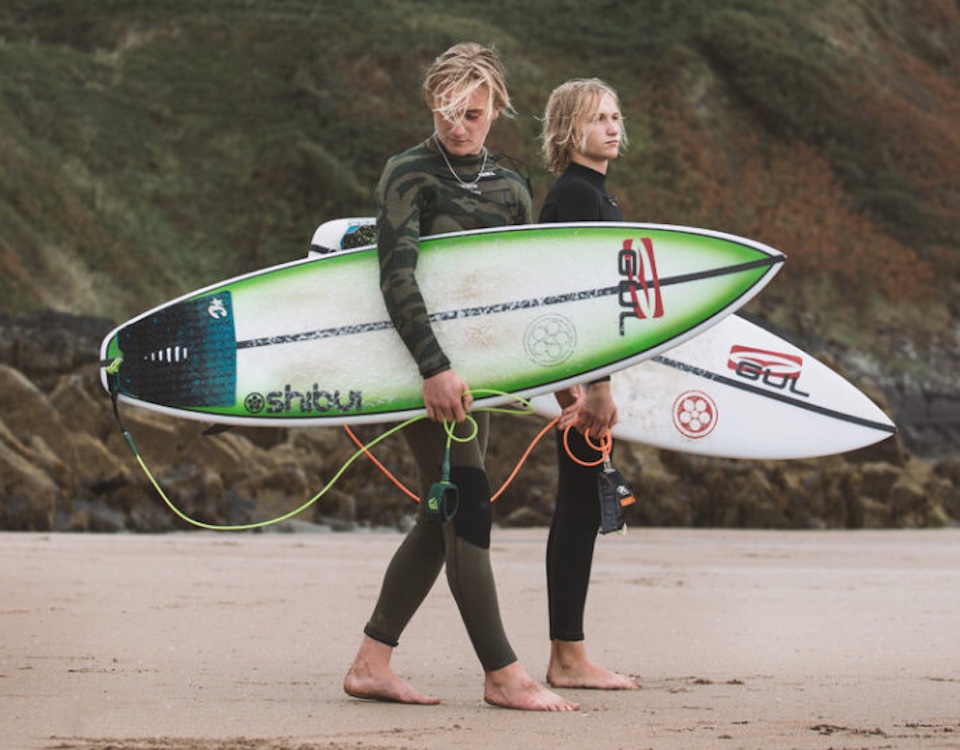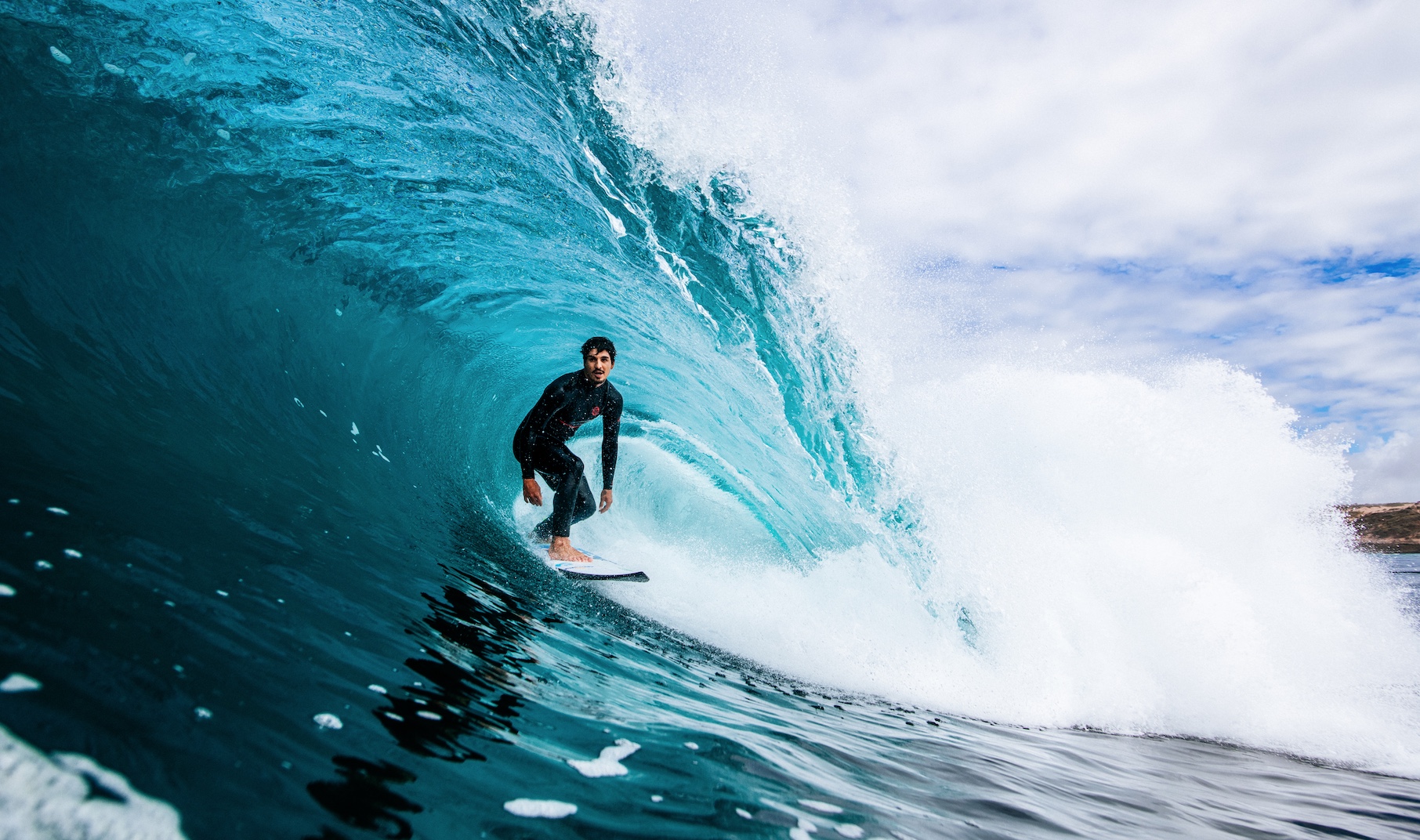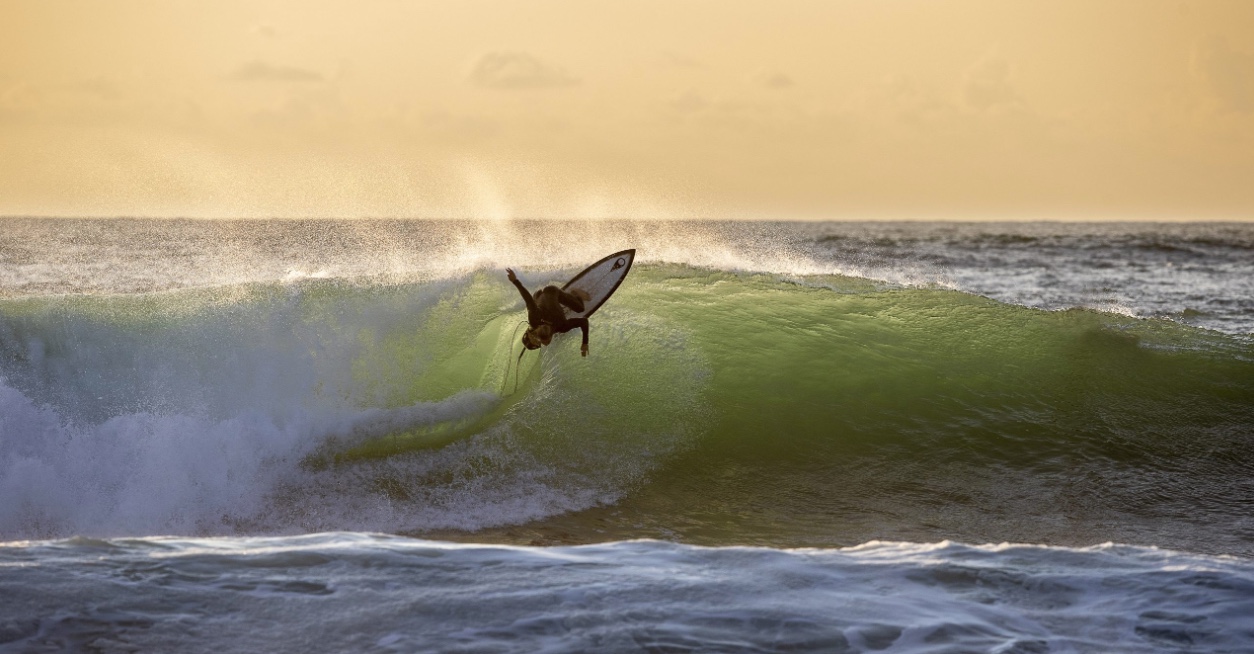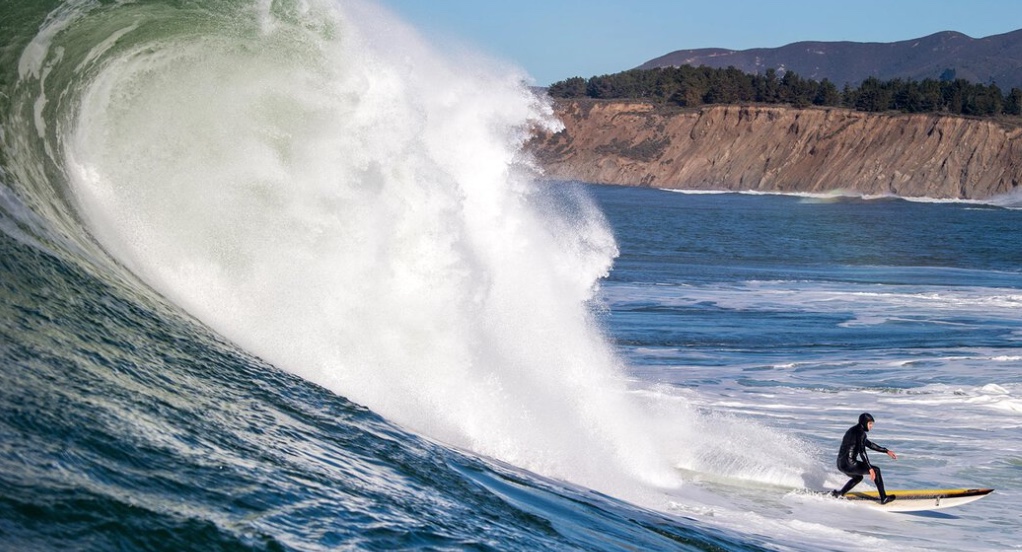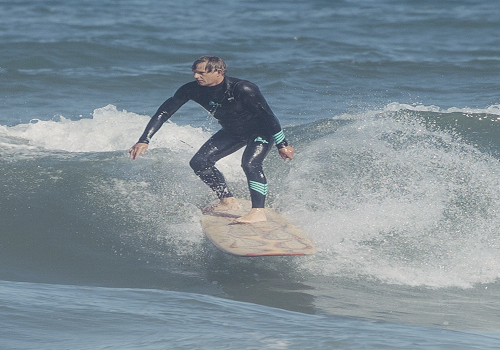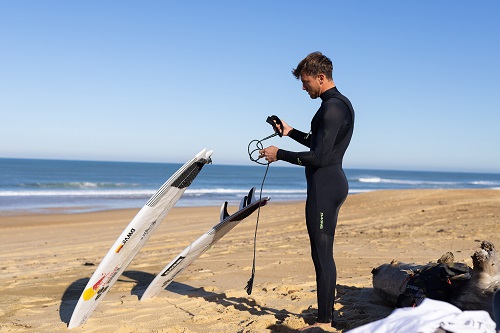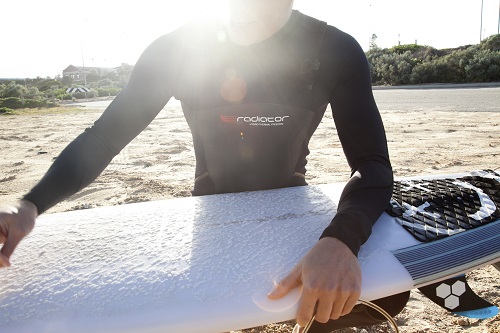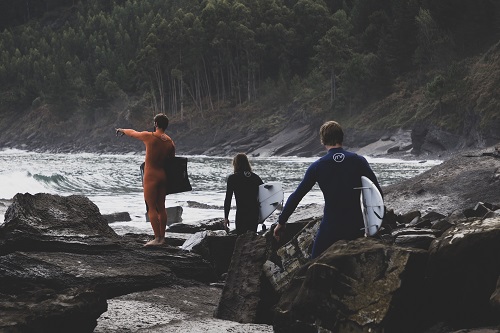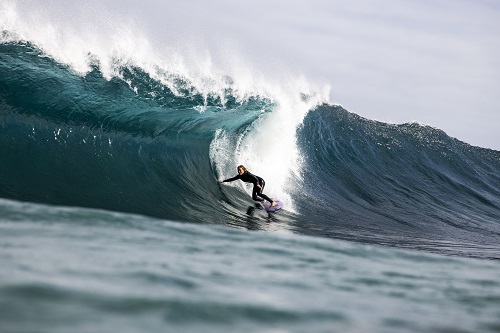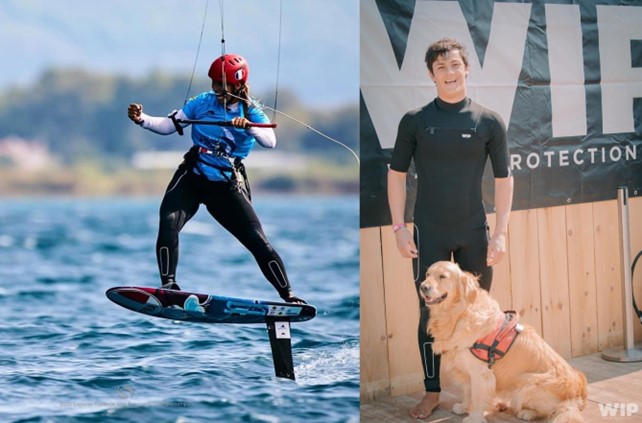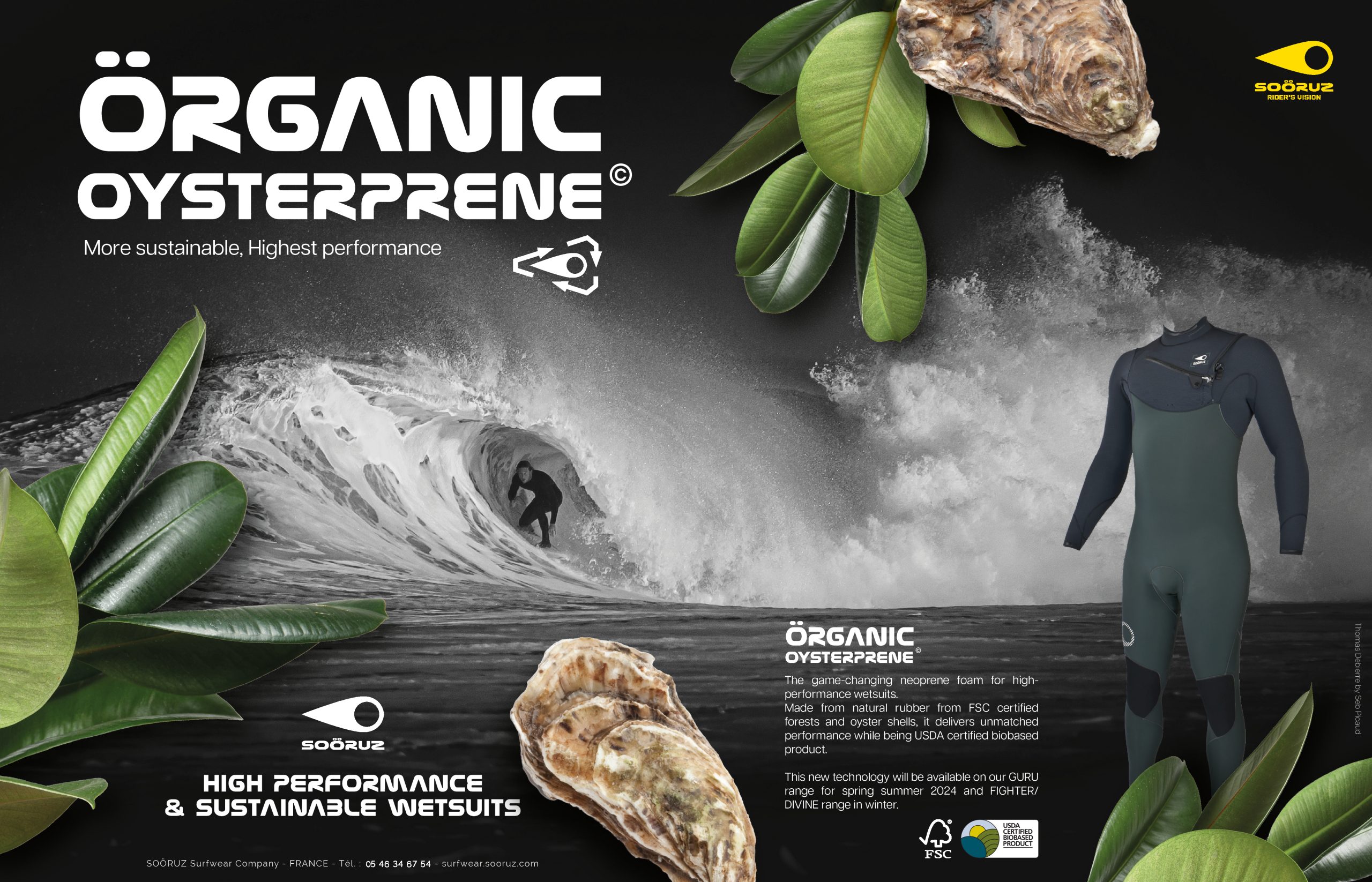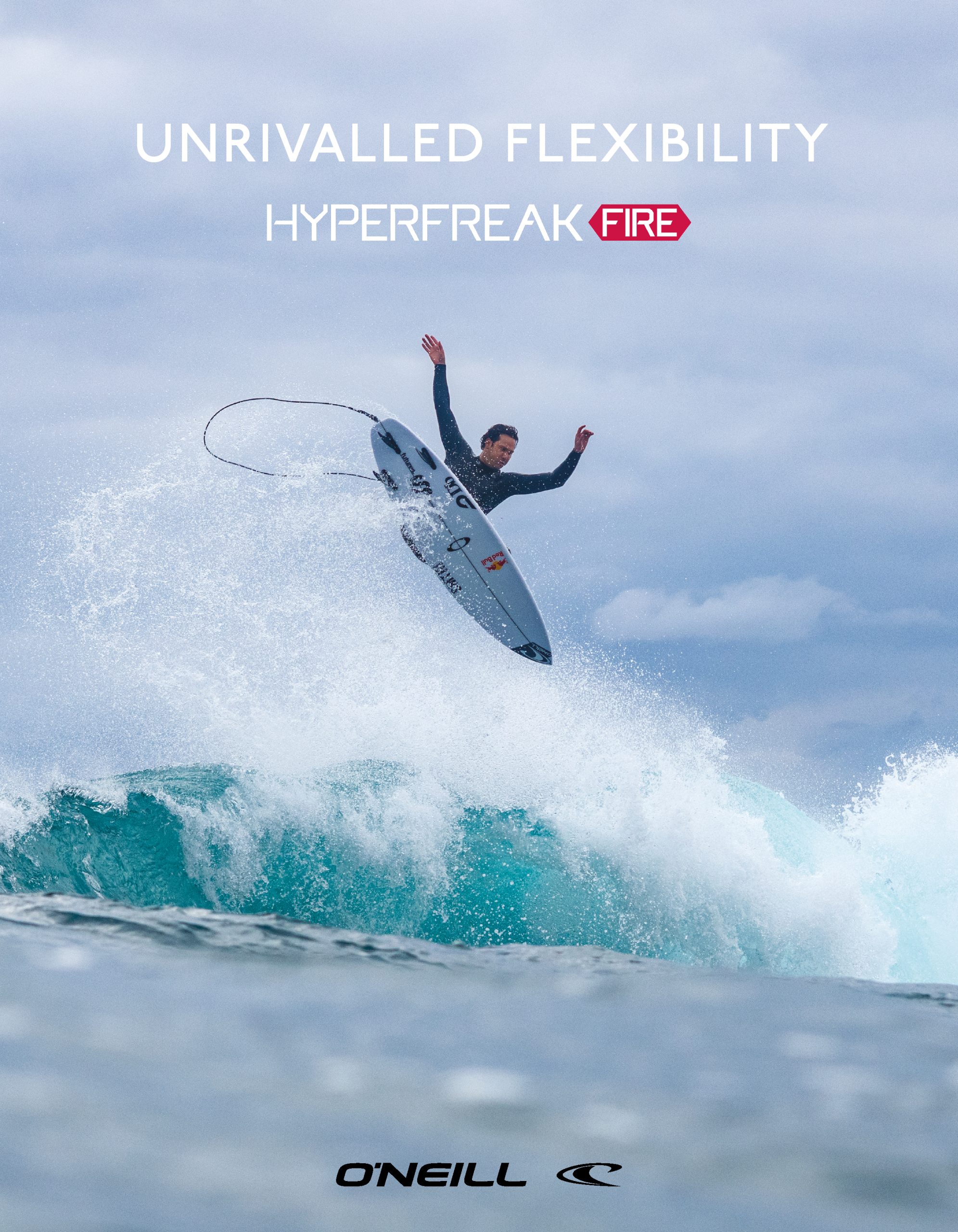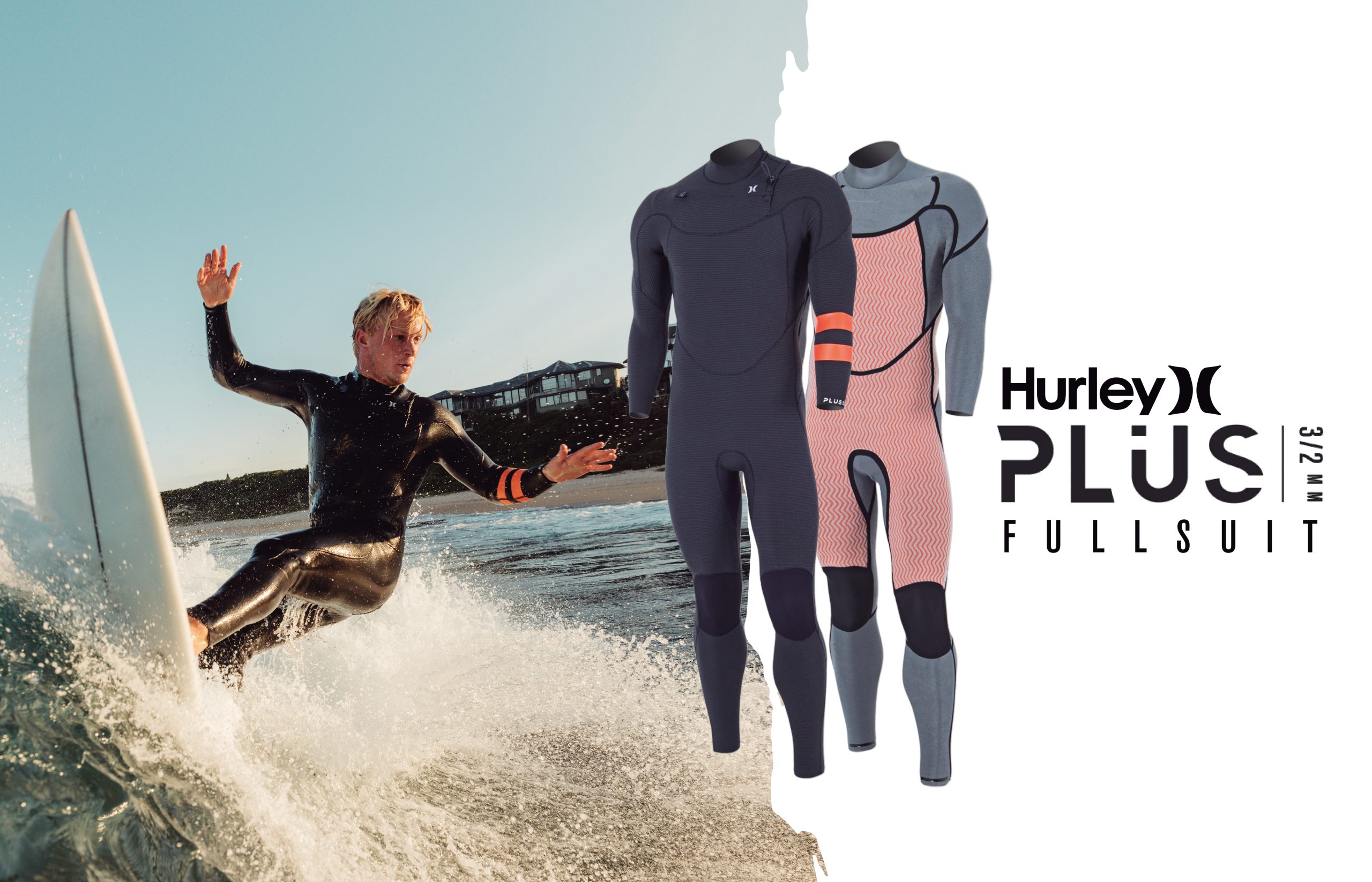Wetsuits FW24 Retail Buyer’s Guide
If we were to select a single word to give an overview of the wetsuit market in FW24, it would be “reconsolidate”. Still plagued with poor demand and slowly clearing stocks, the industry is doing groundswell work behind the scenes, until a brighter chain of events turns up. By David Bianic, Senior Surf Contributor.
Truth be told, our surfer cabinet consists of many expendable items. Things we don’t need, but we do love, and are willing to pay for. Well, wetsuits definitely don’t belong to that category. You can’t live without them. And whatever the durability of the steamer, you will have to refresh your rubber quiver every 3 years, tops. The point here is that the overstock issues have a solution: time. Not the answer you were expecting, for sure. “Winter wetsuits are a necessity not a luxury so we’ll see the product work through in time”, says Phil Bridges, Designer for Dakine.
But if the shelves are slowly clearing, there is a price to pay… for the retailers. “The main issue that concerns our dealers is the amount of end-of-line stock that has been dumped on the market recently”, points out Tom Copsey, Product Manager at O’Neill. We are talking deep discounts on the FW23 models, which brings us to the next seasonal challenge. The confidence level of the brands regarding FW24 preorders/orders isn’t at its utmost high. “Retailers are a bit chilly on pre-orders because of the past year”, notes Mathieu Desaphie, Founder and Designer of Sen No Sen, “but in the same time they welcome super good a brand like SNS who didn’t do ridiculous discounts on wetsuits all year long”. Be sanctioned or be rewarded, your commercial policy will tell. Rip Curl sees the big picture and emphasize on their commitment to price stability, avoiding discounts in flagship products.
Let’s end this introductory assessment with a question, from Patrick Watin, Sales Manager for West Wetsuits: “The real question is how much cost a good wetsuit and are we able to sale wetsuits at this price?”
PRICEPOINTS AREN’T AN ISSUE
A winter wetsuit is the second most expensive piece of the surfer’s kit after the board itself. The candid approach would be to consider that high price points hinder the sell out in an inflationary context. The reality is that core surfers do not want to compromise their surfing experience and are willing to hand serious dough in exchange of performance wetsuits. As summed up by Phil at Dakine, “a cheap winter wettie is a false economy”. Could not agree more. Among the many examples is Rip Curl’s Fusion model, the top-end of the line, which has met great success says Bastien Grandy, Wetsuit Product Manager Associate.
That being said, we also see a trend where some of the most element-resistant wetsuits retail at a more affordable fare. This winter, GUL launched a 6/5/4 hooded suit with a price tag of £250 which has already sold out. No wonder why. “This is also quite geographic”, explains Nuno Fonseco, CEO of Gotcha, “as there are countries in Europe where you mostly use a winter suit all year round”.
NO NEWS IS GOOD NEWS
You know the drill by now: when the squalls picks up, you lower the mainsail. As times went hectic – COVID, material & shipment costs skyrocketing, inflation, drop of the demand – the wetsuit industry chose the safest way out of the storm, it’s to say carry-overs. “There is still a lot of winter product out there from all brands so until regular stock levels are resumed it’s pointless pushing retailers to discount and discontinue product that is selling slowly in the current climate, this just devalues the brand and the wetsuit market in general”, explains Tom Copsey at O’Neill.
So Fall/Winter 2024 is likely to be an additional season of carry over, with a hint of fresh pieces to keep the excitement pulsing.
In no particular order, we have learned that Alder will introduce a new top end women suit, and Dakine features a new price point model featuring a plant-based version of their FriendlyPrene (named the Eco Mission). Roxy stays true to its commitment, “developing a new range every winter”, ensures Nelly Pargade, Product Manager. “This season again we are bringing innovation and novelties in our mid and high offer”, it’s to say the Elite and Rise collections. Hooded wetsuits are a rare thing on the market for female surfers and it is worth shining a light on Soöruz GURU+ Hooded: “We tested it in Iceland with water temperatures around 5/6°C and an air temperature of -10°C, and our riders felt warm and extremely flexible in this 6/5/4 wetsuit.” It is also worth mentioning Gotcha will enter the women market with their very first female suit, and paid particular attention to the fit, ensures Nuno Fonseca.
As per Hurley, the brand introduces a new model, the Max 5/3: “Whether surfing in colder waters or enjoying waves in warmer climates, the Max 5/3 offers a perfect balance between flexibility and thermal insulation, ensuring users feel comfortable in any condition.”
But as per the rest of the bunch, you won’t notice much difference on the wetsuit hangers in your local shop from FW23 to FW24. And yes, that is good news, in a way.
RUBBER COOKING
We do know FW24 will be a continuation of the current offer, but it does not mean we can spare ourselves a quick recap of the existing neoprene technologies out there. The traditional limestone neoprene isn’t going anywhere and generates quite a cult following due to a second skin feeling which overrides its poor eco-credibility. The Australian-based brand Radiator only swears by Yamamoto, joined by a few others. In addition, Radiator claims their wetsuits are able to retain more heat and are less buoyant than thicker suits thanks to their Closed Cell Content.
The oyster-based limestone rubber has partially solved the environmental issue and spread out in the higher end models. Soöruz pioneered the technology and does its best to have an edge of the competition with the release of a new foam, the Örganic Oysterprene. Using natural rubber, oyster powder and vegetal oil (68% bio-sourced), they already implemented the formula on the GURU range for SS24 and “are happy to extend it to our FIGHTER and DIVINE ranges for FW24 making the majority of our wetsuits chloroprene free”.
More than ever, wetsuits are made of a mixed bag of materials, as featured in Roxy’s Eco Stretch Flight and Eco Xtra stretch foams made with recycled rubbers, recycled neoprene, oyster shell and limestone. Nelly Pargade, at Roxy teases about their process of “developing a new material that incorporates over 80% recycled wetsuit material”.
Dakine’s FriendlyPrene became a game changer since its introduction last year. Thanks to the Yamamoto #39 neoprene compound with added Eco One ingredient to increase biodegradability, you can know enjoy “the legendary Yamamoto performance with the addition lab proven landfill degradation testing”, says proudly Phil Bridges.
Fall/Winter 2024 will also be the 10th anniversary of Patagonia using Yulex® natural rubber, which will spread to 11 accessories “covering our booties, gloves and hood offerings”, lists Gabe Davies, Oceans Marketing Manager EMEA. They paved the way and now a big name such as Rip Curl incorporates 30% Yulex® natural rubber in the Dawn Patrol range, “constituting 37% of our Fall 24 offering”, adds Bastien Grandy, Wetsuit Product Manager Associate.
But the biggest news – and you read it first on boardsportsource.com – is undoubtedly Sheico’s bio-based foam which will make future wetsuits 100% neoprene free. OCENA is a new foam crafted by Sheico using FSC-certified natural rubber, enriched with oyster shell powder and soybean oil. According to Sheico’s Jeff Shiue, OCENA achieves (traditional) neoprene-level standards in elasticity and durability. No partnering brands have yet been unveiled but rest assured, this will make some noise in the industry.
BODY ARMOURS
Sometimes underrated in comparison to the mighty neoprene core, linings are the actual body armours of the wetsuit structure: the outside lining is the first barrier from the elements, whereas the inner linings maintain that warm layer of air that keeps you comfy and active. On the outer, most use nylon for its “superb stretch and memory” says John Westlake at Alder, as featured on their FX range. Nylon it is as well on West’s Lotus model (4/3 & 5/3) with the latest Gen-4 Ultraspan lining, which claims to give a 350% elasticity to the wetsuit.
One key aspect of the outer lining is its hydrophobic property and Jack Knowles at GUL emphasizes the improvements made in this regard, “so less water means less cooling”, aka the wind chill effect. The linings are laminated to the neoprene foam and in 2024 everybody has opted for the solvent free glues, a more sustainable process with no compromise on the durability. In the same vein, most now implement dope-dyed yarn into their linings as “this process of coloring yarn saves huge amounts of water while reducing energy consumption and water pollution”, echo Vincent Cadene (COO) and Mathis Bourgnon (Sport Marketing Manager) at WIP Water Protection.
We often pay more attention to the inner lining as it is directly in contact with our skin, hence the success of plush jerseys, like the Fireline used on Alder’s Torch FX Hooded Men 5/4, a nice addition for the cold-water warriors out there. Another lining expert is O’Neill, whose TB4 Duraskin Air Firewall not only traps your body heat but makes it recirculate in the suit. The lining also features one of the key developments of the past 5 yeads: the integration of graphene material within the jersey.
TO DUST YOU SHALL RETURN
The afterlife of the wetsuits isn’t in the sole hands of the consumer anymore as most brands have embraced this new realm with a thorough approach. Since the launch of their Second Life Program in 2019, Soöruz claims they collected & shredded more than 40,000 wetsuits thanks to 132 collecting points in Europe, thus being able to “revalue 95% of the wetsuit” and develop new materials for sport floors, wall decorations or pillow stuffing.
Though Dakine offers a biodegradable wetsuit, they also take care of the “regular” suits, thanks to a partnership with Circular Flow, to collect and recycle old wetsuits into new products, namely a line of accessories. As per Oxbow, they turn your old wetties into leashes, thanks to their local partner Nomads Surfing, specializing in eco-design.
GUL shines a light on a not-so-known facility, Bodyline. Based in Newquay, Cornwall, Bodyline is considered Europe’s leading wetsuit repair centre, with over 40 years of experience. Yep, you weren’t even born, matey. The portfolio of key brands which call upon on them to service damaged wetsuits is most significant.
O’Neill is also a firm believer of “meaningful” recycling and counts on “many regional recycling initiatives from carbon black recycling to yoga mats to a remanufacturing facility where completely unusable old suits can find a new life in a new product”, says Tom Copsey. A simple example: “Even though a wetsuit may have reached the end of its useful life a zip can sometimes be reused in the repair of another, even the small things matter.” Through their Wetsuit Recycling Program (in collaboration with Terracycle, the global leader in “hard-to-recycle” materials), Rip Curl collects any branded wetsuit, which are “repurposed into raw materials, contributing to projects like soft-fall matting at children’s playgrounds worldwide”, mentions Bastien Grandy.
Clearly, FW24 won’t be a firework parade of innovation but don’t be fooled by the carry-overs: in the meanwhile, brands take advantage of the extra time to do some proper R&D and the future eco-neoprene could well open a grand chapter in the wetsuit industry.



















